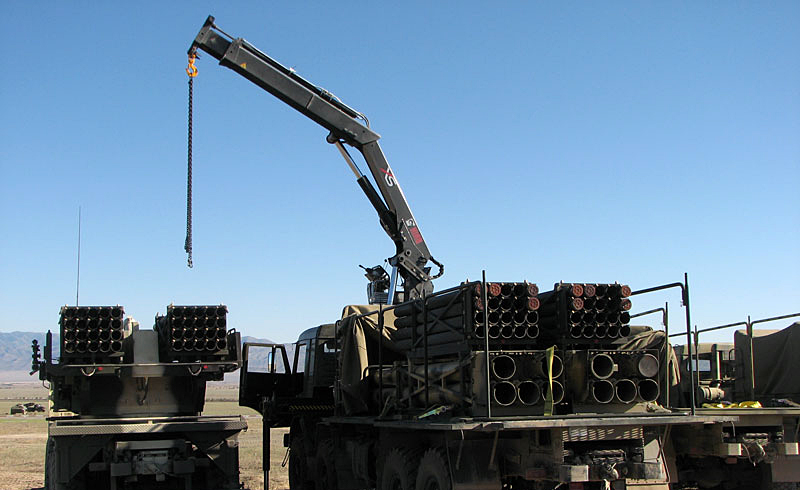 franco Wed Apr 18, 2018 4:45 am
franco Wed Apr 18, 2018 4:45 am
Tekhmash includes various enterprises. And, probably, the most famous of them is NPO "Splav", which is located in Tula. First of all, it is known for the volley fire systems developed there. On the "Grad" in general the songs add up. Is it being improved or produced, as it was created 55 years ago?
Vladimir Lepin: Indeed, the multiple rocket launcher system (MLRS) "Grad" appeared in 1963. And it turned out to be so good that even if it had not been improved, it would still fully meet the demands of the times. By the way, its creator, the brilliant Russian designer Alexander Nikitovich Ganichev on August 25 this year would have turned 100 years old.
The rocket of the "Grad" system has been repeatedly improved over the years. This allowed to increase the accuracy of fire and to increase the range of the projectile from 20 to 40 kilometers.
In the USSR, there were produced millions of 122 mm rockets to this system. They were actively exported and used in various armed conflicts. In the arsenals to this day remained a significant number of rockets. We have developed a technology for their overhaul. From the engine of a rocket the old powder charge is removed and a new one is put. If necessary, the tail section is changed, a new fuse is installed.
At the same time, two tasks are being accomplished: updating the arsenal and actually disposing of old ammunition without destroying them. It suits the military.
Nevertheless, to replace the "Grad", as far as is known, is a MLRS "Tornado".
Vladimir Lepin: Gradually, not only "Grad" will be replaced, but a more powerful MLCD "Smerch". Already today, a large-scale issue of Grads and Smerds has been discontinued. The production of two new systems - "Tornado-G" and "Tornado-C" is being mastered. One has a "Gradovsky" caliber 122 mm, the other - 300 mm, like the "Smerch" system.
What makes the "Tornado" different from the multiple rocket launcher systems that precede them?
Vladimir Lepin: "Tornado" is a system of a completely new generation for us. They are equipped with modern ballistic computers, working in conjunction with the Global Navigation System - GLONASS. The accuracy and range of their shooting is much higher than that of their predecessors.
In "Tornado-G" we have achieved a significant increase in firepower. The solution is apparently simple, but there were many nuances. Rockets of the classic "Grad" hit the area along an inclined trajectory.
The Grad system proved to be so good that it would still meet the requirements of the time
In the ammunition "Tornado-G" new ammunition appeared - when they are over the target, the combat unit separates, the parachute opens and the whole volley falls vertically. In this case, the explosion can occur as a blow, and at a certain height.
The "Tornado-S" missiles can be corrected in flight, which significantly increased the accuracy of target destruction at a range of more than 100 km. Moreover, they are corrected not by a human operator, but by a control system located directly in the rocket.
We also produce a rather powerful multiple rocket launcher system - the "Hurricane" of caliber 220 mm. This system was also modernized.
Feature "Hurricane-1M" - batch equipment. The installation is two packages. One can be 220 mm, the other 300 mm. Either two on 220 mm. Guide pipes from carbon plastic. They are equipped with missiles at the plant or a special artillery arsenal.
In the "Hurricane-1M" after the volley, the starting block is simply dropped, which allows the machines to quickly leave the firing positions. Then, at a safe distance, fully equipped packages with new missiles are installed.








